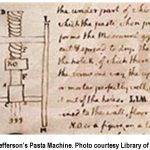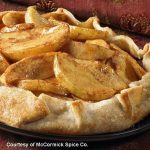
Pawpaws: America’s Forgotten Fruit
The pawpaw is the largest edible tree fruit native to North America and indigenous to the temperate woodlands of the eastern United States.

The pawpaw is the largest edible tree fruit native to North America and indigenous to the temperate woodlands of the eastern United States.

Probably the most perfect rendition of street food ever created in this nation is the humble corn dog. After all, what could be more convenient to someone taking a stroll than a wiener impaled on a stick, dipped into a thick batter, and deep fried? The origin for this all-American fast food dates back to […]

The first known recipe for a macaroni and cheese casserole was recorded as far back as thirteenth century Italy. In the medieval cookbook Liber de Coquina, the anonymous author describes layering sheets of lasagne with powdered spices and cheese (likely parmesan) of choice. This recipe (called de lasanis), while certainly not the same as the […]

This wonderful fruit bread is made from the largest edible fruit native to North America.

Pawpaw is indigenous to the U.S. with a taste is similar to banana and makes a wonderful pie.

Pawpaw preserves are extremely versatile and makes an excellent topping for ice cream and yogurt.